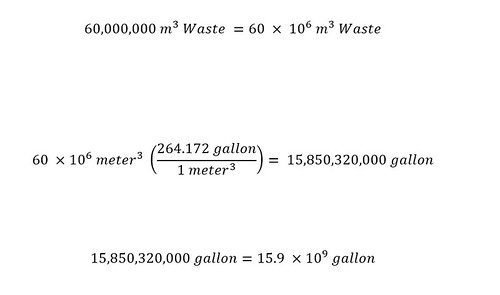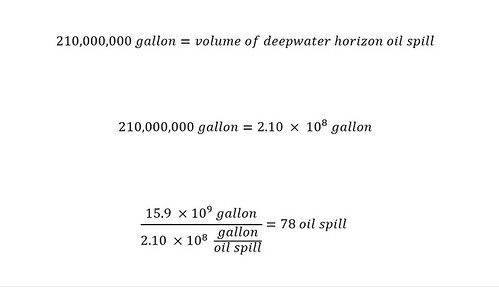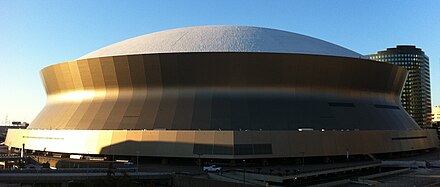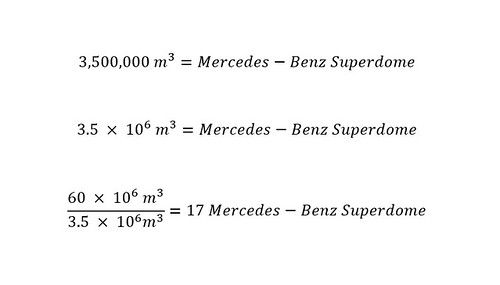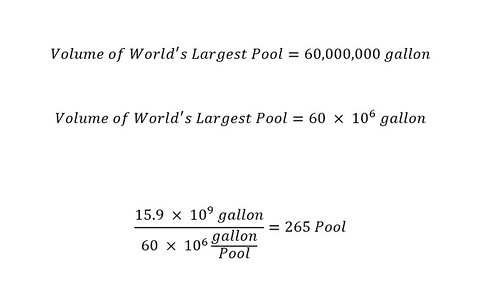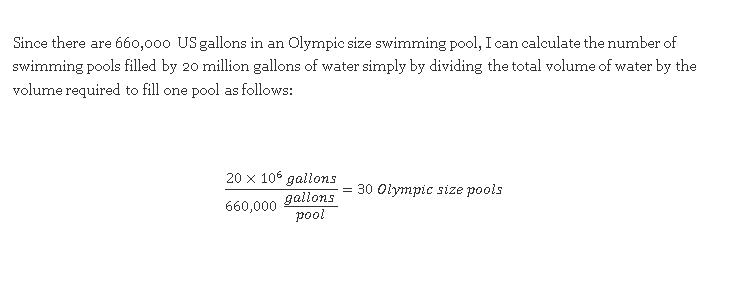As I mentioned above, between the two readings a couple of events transpired. I think honesty is a good practice -- to admit that I am not perfect. After I read the article the first time in a rush, I e-mailed the author and asked him for more information. Specifically, the first paragraph states the overall 'eye-catching' general consequences of the disaster:
Since millions of gallons of mining waste burst from an inland iron ore mine a month ago, 300 miles of the Rio Doce stretching to the Atlantic Ocean has turned a Martian shade of bright orange, and the deadly consequences for residents and wildlife are just beginning to emerge.
I posted a question on the author's twitter account to inquire into a more definitive quantity of waste water that was actually spilled in the disaster. He responded by informing me that a more accurate estimate of the total volume was listed in the article. I quickly read the article for the second time, looking for a volume listed. This is what I found:
The dam near the inland city of Mariana that broke on Nov. 5 is operated by Samarco, a mining company owned by Brazilian mining giant Vale and Anglo-Australian mining giant BHP Billiton.When the barrier burst, for unknown reasons, more than 60 million cubic meters of waste began flooding nearby communities and wound up in the Rio Doce.
Without talking about the long-term environmental effects (which will be covered in a later post), I wanted to focus on the magnitude of waste released from the damaged dam. After exchanging correspondence with the author, I was looking for a reported/stated value of waste water expressed in 'units' of 'gallons' rather than 'cubic meters.'
Whenever you express a value, the importance of keeping uniformity (in reporting units of measurement) cannot be understated. This is to avoid confusion. In the situation described above, I was expecting to find a total volume of the mine spill expressed in units of 'gallons' rather than 'cubic meters.' Regardless, the value was expected to be large based on the picture in the article -- which are shown below:
Source: LA Times -- Brazil's Rio Doce River
My curiosity started to run wild. I could not get my head around the reported value of 60 million cubic meters. What was the equivalent volume (60 million cubic meters) expressed in gallons? Therefore, I decided to calculate the value in gallons using dimensional analysis. Below is the the conversion based on the conversion factor of cubic meters to gallons (1 cubic meter = 264.172 gallons).
In the first line, the value of 60 million cubic meters is expressed in scientific notation. The use of scientific notation allows large numbers -- extremely large numbers -- to be expressed more easily. Regardless of notation, the number of gallons is HUGE. The extent of the disaster is INSANE. After I saw the number of gallons, I immediately started wondering how the number (15.9 billion gallons) compares to various volumes. What volume would be sufficient to compare to the present 'man-made' disaster?
How many 'Deepwater Horizon Oil Spills' would compare to Brazil's mine spill?
Since the topic was a man-made environmental disaster, I immediately thought of the tragic 'Deepwater Horizon Oil Spill' back in 2010. The oil flowed out of the well for 87 days and amounted to a total of around 210 million gallons. That is why I was extremely surprised by the reported volume in the 'Times' article about the Mine Spill in Brazil. I decided to compare the two volumes.
Specifically, I wanted to know how many oil spills would be equivalent to 15.9 billion gallons of iron-ore waste. First, I converted the value of the spill into scientific notation. Then I divided the two volumes to obtain the number of equivalent oil spills. Below are the results:
Wow! Unbelievable. I am blown away. I cannot believe that the equivalent volume of the Mine Spill is comparable to 78 Deepwater Horizon Oil Spills. That is a LARGE amount of waste water (iron-ore waste). The volume was so large that I was still having trouble wrapping my head around the magnitude of the volume.
As a result, I had to find another image to assist my inability to wrap my head around the value. I found a photo from an article in the Wall Street Journal titled "Samarco May Not Shield BHP, Vale From Brazil Dam-Breach Repercussions."
Source: the Wall Street Journal
The volume of iron-ore waste started to make sense after viewing the above photo. Based on the photo above, that large volume would have destroyed a large area of land -- such as that above. As the picture portrays, the water must have thrashed the town houses, cars, and forestry in the path as the potential energy of the stored water (in the dam) rushed out. Again, that damage must have been due to a large amount of water -- like 15.9 billion gallons. WOW.
Still left rather unsatisfied. I am having trouble visualizing 78 'Deepwater Horizon Oil Spills.' In light of this feeling, I decided to compare the value of 15.9 billion gallons to a couple other volumes: 1) the Mercedes-Benz Superdome and 2) the world's largest pool. These two volumes are extraordinary feats of construction. Further, the two volumes have served me well in past posts using dimensional analysis.
To start with the Mercedez-Benz Superdome in Louisianna. The volume reported on the 'Wikipedia' site of the interior of the Superdome is believed to be around 3,500,000 cubic meters. Below is a picture of the Superdome:
How many of these Super structures will be required to hold a volume of 15.9 billion gallons? Below are the results:
Again, the number is large -- HUGE -- beyond comprehension. The last remaining super structure that is appropriate to compare such a volume is the World's Largest Pool. The World's Largest Pool is located in Chile and is shown below:
Source: Huffington Post
This amazing swimming pool holds an astounding 60 million gallons of water. That is enormous. Although, based on the mentioned volumes above, the volume of the World's Largest Swimming pool is starting to look rather small. To be complete, the calculation was carried out. Here are the results:
Oh my goodness, 265 swimming pools would be required to hold 15.9 billion gallons of water. This should be too surprising. Imagine what your guess would have been at the beginning of the blog post after hearing the initial value that was reported of 60 million cubic meters? Would your guess have been larger, smaller, or equivalent to the calculated value?
Conclusion:
As I mentioned in the introductory blog post for this website, my intention was to demystify numbers that were reported in the popular news. Further, to give the reader or you a better understanding how how a scientist thinks. These objects, structures, or volumes were what came to mind while reading the above articles.
Does that last sentence sound crazy?
If so, relax, and do not stress yourself out. The world is full of diverse people. I might not think like you. Furthermore, what questions arise in my mind might be completely different than those that arise in yours -- even after reading the same article.
Who cares about the value reported?
That is another story completely (and another blog post). We might have different interests, concerns, questions when reading content in the popular news. What unites us in this situation is that we both live on the planet Earth. If these tragic accidents keep occurring, the toll down the line (in years to come) could be deadly to everyone (not just the Brazilians).
The first step toward being concerned about possible issues (some of which I will bring up in the 'follow up' post on this disaster) is the understanding of the magnitude of the problem. As I mentioned, the first time that I read through the article, I missed the HUGE magnitude of the disaster (volume of waste) due to different units. This shows how narrow-minded I was -- I am looking for gallons. I should have slowed down and read the article more carefully the first time around. How often do you have the same happen to you? Reading too quickly to miss the content? These are questions that each of us need to answer based on our own actions.
I hope that the disaster down in Brazil has been brought into a different light for you after reading this post. Have a great day!
